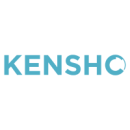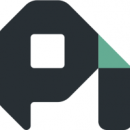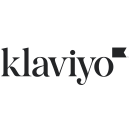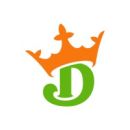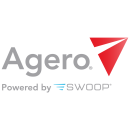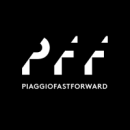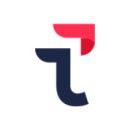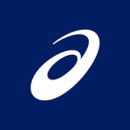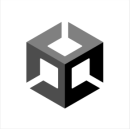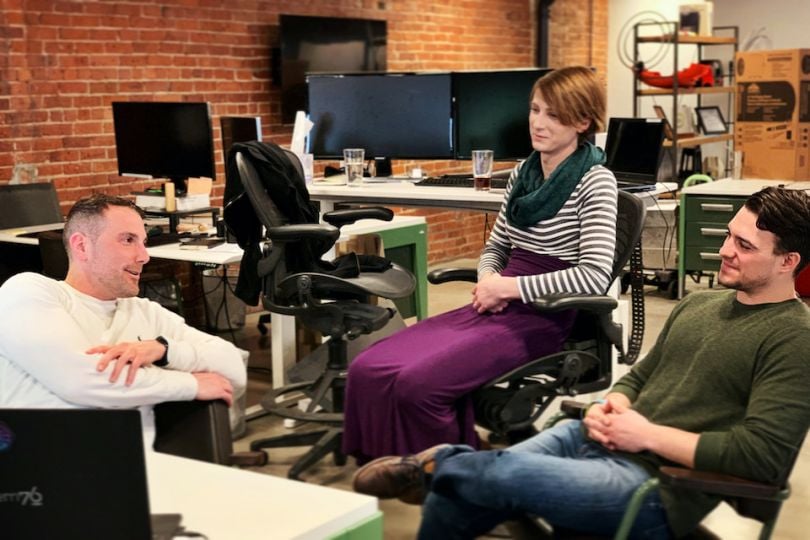
In these uncertain times, it’s comforting to remember that many local companies are still tackling customer-focused challenges like helping subscription companies reduce churn and keeping roads safer through driver-support solutions like roadside assistance and accident management. And these companies can only accomplish these projects through the work of their talented — and growing — teams.
Engineers at the following 11 companies are encouraged to embrace unique company cultures and opportunities. For instance, employees at Kensho Technologies are encouraged to formally share their personal journeys with the entire company after a year with the business. Meanwhile, engineers at Bevi occasionally travel across state lines to provide interdisciplinary assistance to engineers from other departments.
And there’s no shortage of engineering traditions, like one team collecting — and viewing — an extensive collection of VHS tapes, while another Boston tech company takes pleasure in celebrating its proud Italian heritage.
“Our internal code names are pasta-based,” Piaggio Fast Forward Senior SQA Engineer Jason Dion said.
What they do: Investment professionals can use Kensho Technologies’ AI and data visualization techniques to solve complex analytical problems.
Kensho’s tech stack: “We deploy to Kubernetes and Docker on AWS with most projects, making use of S3 and Relational Database Service,” Graham said. “Most of our applications are built in Django with some smaller services implemented in Flask. Other components in our ecosystem include HAProxy, Nginx, Redis and Elasticsearch.
Our infrastructure teams use tooling that helps keep our process — and us — sane. They maintain a linter that is integrated with our continuous integration pipeline, which keeps our readability high. With Sentry for error logging, Prometheus monitoring with Grafana and ElasticStack for log exploration, it’s easy to get a pulse on what’s going on with our applications at any given time.”
Most interesting project: “The Codex project is the most interesting project I’ve worked on to date. In some ways, this project is the most reflective of Kensho’s engineering capabilities at a broad level. Almost all of our team members have contributed to some aspect of Codex, directly or not. Being on this project has been not only a great experience, but has also given me the opportunity to interact with the largest group of people within Kensho.”
Unique engineering traditions: “There is a Kensho tradition called ‘my story.’ After a year with the business, employees are encouraged to address everyone in the company and tell their personal story. It’s time we set aside for Kenshin to get to know each other on a personal level and be inspired by our peers.”
What they do: Bevi creates a line of smart, standalone and countertop water dispensers.
Bevi’s tech stack: “Bevi’s IoT footprint on the smart water cooler machines runs on Android with a custom, single-board computer featuring a touchscreen interface,” Burka said. “The code on the machine is written using Java and Kotlin. JSON is used for data exchange to Bevi’s back-end cloud application. The machine also has custom electronics with custom firmware written in C++ running on embedded microcontrollers.”
Bevi’s back-end cloud application is written in Java with the Dropwizard framework. InfluxDB serves as the primary datastore for IoT time series data. PostgreSQL is used as a relational database management system. The front-end partner portal and management application is written in TypeScript with React Redux.”
Most interesting project: “As we’re working on next-generation hardware, we approach our software development as a robotics discipline. We’re leveraging sensors and hardware controls to create a unique and pleasing user experience with innovative new features.”
We’re also working on unlocking scalability to support data growth driven by an overall increase in machines in the field. This initiative involves evolving the back-end application architecture and datastores to accommodate the forecasted data volume.”
Unique engineering traditions: “Bevi’s software engineering team has to work closely with engineers from other disciplines such as electrical engineering, mechanical engineering and manufacturing engineering. We’ll sometimes travel to our manufacturing facility in South Carolina to assist the team there. The multidisciplinary approach to engineering Bevi’s product allows for interesting exposure to new fields and experiences.”
What they do: Profitwell is a business intelligence solution provider for subscription companies, helping them grow their businesses and reduce churn.
Profitwell’s tech stack: “On the back end, we’re largely using Python, with our API layer in Django,” Cox said. “We also have a few targeted microservices using either Falcon or Node.js. On the front end, we need to present that data to our customers in an intuitive, uncluttered interface. We use TypeScript and React.js, with React Native for the mobile app.”
On the operations side, we’re hosted completely at AWS, leveraging a scalable Kubernetes cluster with dozens of EC2 servers and hundreds of pods running at any given moment. We also try to pick the right data storage tool for the job, so while a majority of our data is in MySQL, we also leverage Elasticsearch, Redis and Redshift to optimize our user experiences.”
Most interesting project: “The project I’m most excited for is a major rethinking of the architecture we want to scale to the next level. In the early stages of our startup, the datasets were small. Now we have thousands of companies that rely on timely processing of their data, and the workloads we’re running are many multiples of where we started. Now is the perfect time to make an impact on the future of our product and architecture.”
Unique engineering traditions: “Our company has a collaborative environment and we encourage a strong culture of feedback to let the best ideas surface. This mix leads to a lot of healthy debates and refinements to what we build. And we believe it leads to better products, more efficient software and happier engineers in the long term. There’s obviously a tradeoff between speed and quality, and while we’re always trying to find the sweet spot, we tend to err on the side of shipping well-designed software.”
What they do: Klaviyo helps online businesses optimize their email, web and mobile marketing channels with tools dedicated to customer profiling, automation and more.
Klaviyo’s tech stack: “As a member of the platform pod of site reliability engineering, we work with many different technologies across our stack,” Meichle said. “That tech features Django and Celery in our core applications as well as underlying technologies like RabbitMQ, Apache Cassandra, Redis, Memcached, AWS Aurora for MySQL and PostgreSQL. To manage everything, we utilize many tools such as Apache Zookeeper, Graphite, StatsD, Jenkins, SonarQube, Terraform, Packer, Kubernetes, Prometheus and Docker.”
Most interesting project: “A project we are working on is building out an automation layer for the Klaviyo stack to enable us to more consistently deliver infrastructure in production. It will also let us deliver entire functional stacks in development for load testing purposes. This project is a challenge as it requires us to build and apply automation to every single component of our tech stack, and there aren’t any off-the-shelf tools available to solve this.”
Unique engineering traditions: “We are a very collaborative and tight-knit team both in how we work and the various activities we take part in together. One of my favorite cultural activities is our VCR working group. Meeting weekly for over a year, we have gathered a library of over 120 VHS movies. Our process is quite formal with weekly votes, tracking spreadsheets and data analytics on our viewing habits and trends.”
What they do: DraftKings provides betting experiences for sports enthusiasts.
DraftKings’ tech stack: “We’re primarily a .NET shop when it comes to building back-end services using a microservice architecture,” Powar said. “We also have an aggressive roadmap to migrate to .NET Core. We use React Redux for our consumer-facing and internal web applications, which are hosted using Node.js. While there are teams that do mobile app development in Kotlin and Swift, my division uses Xamarin, a C#-based multi-platform development framework that allows us to build mobile apps for Android and iOS.”
Most interesting project: “We are currently working on revamping the architecture of DraftKings’s online Sportsbook product to further enhance the experience for our users. It’s a distributed system design at scale in a hybrid cloud environment, fulfilling numerous technical challenges due to regulatory rules and restrictions. Systems design here is not just a technical interview question, but something every engineer contributes to regularly, which provides continuous learning opportunities.”
Unique engineering traditions: “One of the many perks of working at DraftKings is the Friday evening snacks, which is a great platform for everyone to meet and relax. We also have a tradition of Thursday team lunches. Depending on the weather, we go to the Copley square fountain, DraftKings’ cafeteria or some nearby restaurants to talk about pets, sports, movies, side projects or other topics.”
What they do: Agero is a B2B provider of driver-support solutions like roadside assistance, accident management and digital dispatch meant to keep roads safer.
Agero’s tech stack: “Our work requires a tech stack built on tools and solutions that are easy to use and support our need to iterate quickly and go to market fast,” Srinivasan said. “While we are creating a new platform, we still run legacy systems. So we need tools that enable us to combine both old and new.”
We predominantly use the AWS cloud platform with Lambda serverless architecture to build microservices along with micro UI using React or Angular. The coding languages we use include C#, Python and others as needed.”
Most interesting project: “The client solution team is working to abstract out client-specific rules and processes. This configuration process is complex because we have various client types like auto insurers and manufacturers. There is a lot of variability, so we think from different angles, asking various questions on how to optimize, design and develop solutions.”
Within our professional organization team, we’re focused on our international strategy and face a completely different set of challenges. That team is navigating overseas regulation such as GDPR and managing other companies’ legacy systems.”
Unique engineering traditions: “We have a diverse team of employees nationwide and overseas, so we’ve had to build one culture that embraces them all and enables remote collaboration. We work as one team, but the dynamics are different than they would be if everyone was local.”
What they do: Used by colleges, employers and certification providers, Examity’s test administration software helps prevent and detect cheating on exams.
Examity’s tech stack: “A large portion of our product is built with a .NET Core back end and AngularJS for the front end,” Brand said. “We are also now developing new APIs using Python, which happens to be one of my favorite technologies to work with. However, our team doesn’t use technologies just because they’re our favorites. We always stay focused on what provides the best service for our clients.”
Most interesting project: “The Python API that we are building is our most interesting project right now. “It will provide us with a lot of opportunities to open up as a company, in addition to creating a wide range of solution options and methods. The API is fun to work with, but it also elevates the client experience, and you can’t really ask for more than that.”
Unique engineering traditions: “Our engineering culture feels very organizationally flat. Whether you are one of our co-op students or someone who has been in the industry for 20 years, every member of the team has a valued voice. It’s so much easier to work toward a common goal when everyone feels free to contribute feedback and suggestions, knowing that what they say will be respected and considered.”
What they do: Piaggio Fast Forward builds tech-enabled mobility solutions and robotics designed to help users move themselves and their cargo more freely.
Piaggio’s tech stack: “Our cargo-carrying robot “gita” draws on a broad range of skill sets and technologies,” Dion said. “Gita requires sensor integration, firmware and complex vision processing on specialized hardware. The robot also interacts with mobile and web components to create an effective user experience.”
Most interesting project: “Gita is full of challenging projects, like tracking a human, understanding the dynamics of pedestrians and self-balancing while loaded with cargo. Personally, the most rewarding challenge is managing the integration, testing and stability of gita throughout its lifespan as it gets more intelligent and sophisticated. From a user’s perspective, gita is a simple product — it’s loaded with cargo and it follows users wherever they go — but it takes a lot of work to hide the many layers of complexity and make that simplicity happen for the user.”
Unique engineering traditions: “The depth and breadth of experience across the software team coupled with everyone’s willingness to dive in and lend a hand with any problem, even if it’s outside their normal wheelhouse. One of the best benefits of having such a wide-ranging tech stack is the amount of knowledge learned from one another. An engineer with a firmware background will have different ideas and experiences than an app developer or a vision specialist. But their collaboration will yield a better implementation in the end.”
Also, as a company with a proud Italian heritage, our internal code names are pasta-based.”
What they do: Transmit Security’s identity management platform helps businesses manage their authentication, authorization and fraud prevention infrastructure.
Transmit’s tech stack: “We use AWS, cloud architecture, containers, Xcode, Android studio and GitHub,” Galagali said. “Our main development team uses Scala and other object-oriented coding languages.”
Most interesting project: “The biggest projects we’re working on right now involve designing various dynamic user experiences around identity management. We’re also identity-proofing use cases that extend across different business verticals and channels. Each one of these projects presents interesting challenges with unique user experiences. Examples include applying dynamic decisioning and contextual, risk-based authentication and authorization to address business and technical needs.”
The most enjoyable part of this work is being able to implement these dynamic solutions to customers, using platform-definable user journeys within a low-code framework. We are currently working on retail, healthcare, insurance and enterprise-focused use cases.”
Unique engineering traditions: “We have a diverse team in terms of background and skill set. Most of our team has never worked in the identity space before. It’s fascinating to see the way everyone thinks about a problem and how they come up with solutions for our customers’ most challenging use cases. As a result, we are able to come up with innovative solutions.”
What they do: ASICS Digital, the digital arm of the international shoe retailer, builds solutions like the company’s e-commerce platform and fitness apps.
ASICS’s tech stack: “We are using Salesforce Service Cloud, Commerce Cloud and Marketing Cloud, which makes my role more challenging,” Kolla said.
Most interesting project: “My current project is rolling our Japan e-commerce site to Salesforce Service Cloud from end to end to help improve customers’ order and payment workflow. It’s interesting because unlike any of our other regions — U.S., Europe and South Korea — Japan has multiple options for payments like cash on delivery and Amazon Pay. There are also important language constraints to consider and we’re partnering with global teams from Japan and Amsterdam.”
Unique engineering traditions: “I’ve only been at ASICS Digital for two months, but I feel like I’ve known my team for a long time. Everyone on the team is supportive of each other. We communicate well and work collaboratively to get things done. We try to have fun every day by doing things like giving funny names to our sprints and sharing GIFs during our scrum retros.”
What they do: Unity Technologies is a real-time 3D development platform used in applications for gaming, automotive, film and other industries.
Unity’s tech stack: “We have a varied tech stack that’s highly focused on the performance and scalability that allows us to support millions of concurrent users,” Elliot said. “Our client code runs on many different devices like desktop, mobile and game consoles. Our server code is a mixture of Python, C++ and Erlang. We make sure we pick the right tool for each job and the variety keeps the work exciting.”
Most interesting project: “We are load-testing and scaling a new version of our service to ensure it is ready for upcoming game releases. All the teams at Vivox are involved in different ways with the project.”
Unique engineering team traits: “Vivox is integrated into many of the biggest games in the world. Getting the opportunity to work closely with talented game teams is really inspiring.”



